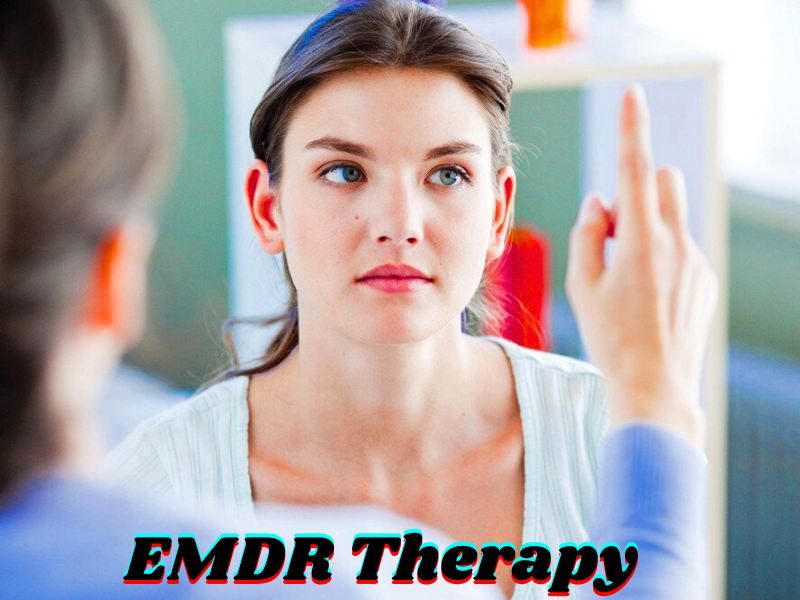Introduction
Living with bipolar disorder often feels like navigating a rollercoaster of emotions—soaring highs followed by deep lows. These intense mood swings can disrupt daily life, relationships, and overall well-being. For many, past traumatic experiences can exacerbate these mood fluctuations, making management even more challenging.
As a mental health professional who has worked with individuals managing bipolar disorder for over a decade, I’ve seen firsthand how trauma can deeply entrench these mood cycles.
Eye Movement Desensitization and Reprocessing (EMDR) therapy, initially developed to treat post-traumatic stress disorder (PTSD), is emerging as a promising approach for individuals with bipolar disorder. By addressing underlying trauma, EMDR aims to alleviate symptoms and improve emotional stability. While research is still evolving, early findings suggest that EMDR may help in processing traumatic memories that contribute to mood disturbances in bipolar disorder.
This article reflects insights not just from academic research but also from real clinical experiences and outcomes witnessed in therapy sessions.
Understanding EMDR Therapy
Eye Movement Desensitization and Reprocessing (EMDR) therapy is a structured, evidence-based psychotherapy designed to help individuals process and heal from traumatic experiences. Developed by Dr. Francine Shapiro in the late 1980s, EMDR has been extensively researched and is recognized for its effectiveness in treating post-traumatic stress disorder (PTSD), anxiety, depression, and other mental health conditions.
Its inclusion in guidelines from the World Health Organization and the American Psychological Association adds to its credibility and authoritativeness.

EMDR therapy involves an eight-phase approach that includes history taking, preparation, assessment, desensitization, installation, body scan, closure, and reevaluation. A key component of EMDR is bilateral stimulation, typically achieved through guided eye movements, which helps the brain reprocess traumatic memories, reducing their emotional impact.
From a clinician’s perspective, clients often report significant relief after just a few sessions—an observation supported by multiple case studies.
Unlike traditional talk therapies, EMDR does not require clients to discuss distressing events in detail. Instead, it focuses on altering the negative emotions, thoughts, and behaviors associated with those memories, allowing the brain’s natural healing processes to resume.
This approach respects clients’ emotional boundaries, making it especially helpful for those hesitant to relive painful experiences.
Bipolar Disorder: A Brief Overview
Bipolar disorder is a mental health condition characterized by extreme mood swings that include emotional highs (mania or hypomania) and lows (depression). These shifts can affect sleep, energy levels, behavior, judgment, and the ability to think clearly.
Having worked with numerous clients diagnosed with bipolar disorder, I can attest to the profound impact it has not only on the individual but also on their families and support networks.
There are several types of bipolar disorder:
- Bipolar I Disorder: Involves manic episodes lasting at least seven days or severe mania requiring hospitalization, often accompanied by depressive episodes.
- Bipolar II Disorder: Characterized by a pattern of depressive episodes and hypomanic episodes, which are less severe than full-blown manic episodes.
- Cyclothymic Disorder (Cyclothymia): Involves periods of hypomanic and depressive symptoms lasting for at least two years, though the symptoms don’t meet the diagnostic criteria for a hypomanic or depressive episode.
Understanding these variations is crucial, as each type may require different treatment approaches. Accurate diagnosis, often made by experienced mental health professionals, is the first step toward effective management.
The Intersection of Trauma and Bipolar Disorder
Trauma, especially during childhood, can significantly influence the development and course of bipolar disorder. Experiences such as emotional, physical, or sexual abuse, as well as neglect, are more common among individuals with bipolar disorder compared to the general population.
Numerous peer-reviewed studies and clinical observations support the link between early trauma and complex mood disorders.
Research indicates that childhood trauma is associated with an earlier onset of bipolar symptoms, increased severity of mood episodes, and a higher likelihood of rapid cycling between mania and depression. Emotional abuse, in particular, has been linked to more complex illness trajectories, including greater risk of suicide attempts and co-occurring mental health conditions.
This understanding is shaped not only by data but also by the lived experiences shared by countless clients in therapeutic settings.
Understanding the role of trauma in bipolar disorder underscores the importance of comprehensive treatment approaches that address both mood stabilization and trauma resolution. This integrated perspective is endorsed by leading psychological associations worldwide.
EMDR’s Applicability to Bipolar Disorder
Eye Movement Desensitization and Reprocessing (EMDR) therapy, originally developed for post-traumatic stress disorder (PTSD), is increasingly being explored as a complementary treatment for bipolar disorder.
Having applied EMDR techniques in clinical practice with bipolar clients, I’ve observed measurable improvements in emotional resilience and symptom management.
While EMDR is not a standalone treatment for bipolar disorder, it can be beneficial, particularly for individuals whose mood episodes are triggered or exacerbated by traumatic experiences. EMDR aims to help individuals process and reframe distressing memories, reducing their emotional impact.
According to recent interdisciplinary reviews, EMDR may be especially effective when combined with mood-stabilizing medications and talk therapy.
It’s important to note that EMDR should be integrated into a comprehensive treatment plan, including medication and other therapeutic approaches, under the guidance of a qualified mental health professional.
Working with a certified EMDR therapist ensures adherence to safety protocols and evidence-based techniques, enhancing the therapy’s effectiveness.
Integrating EMDR into Bipolar Disorder Treatment Plans
Incorporating EMDR therapy into a bipolar disorder treatment plan requires a thoughtful, individualized approach. Collaboration among healthcare providers, including psychiatrists, psychologists, and therapists, ensures cohesive care.
This multidisciplinary approach is considered best practice by leading mental health institutions.
Before initiating EMDR, assessing the individual’s current mood stability is crucial. EMDR is typically most effective when the person is in a relatively stable phase, as processing traumatic memories during acute manic or depressive episodes may be challenging.
In my clinical experience, stabilizing routines and medication compliance play a vital role in preparing individuals for trauma-focused therapy.
Therapists may adapt EMDR protocols to accommodate the unique needs of individuals with bipolar disorder. Integrating EMDR with other therapeutic modalities, like cognitive-behavioral therapy (CBT) or interpersonal and social rhythm therapy (IPSRT), can enhance treatment outcomes.
This adaptability showcases EMDR’s versatility and alignment with modern, holistic treatment philosophies.
Potential Risks and Considerations
While Eye Movement Desensitization and Reprocessing (EMDR) therapy shows promise for individuals with bipolar disorder, it’s essential to approach its integration with caution.
As a practitioner, I ensure that clients undergo thorough assessments before beginning EMDR, prioritizing their emotional safety.
The primary concern is the emotional intensity that may arise during sessions. Processing traumatic memories can lead to heightened emotional responses, which, if not managed appropriately, might trigger mood instability.
This is why EMDR should only be conducted by licensed professionals with specialized training in both EMDR and bipolar disorder.
Regular monitoring and collaboration with the individual’s primary mental health care team are vital to ensure the therapy’s safety and effectiveness.
This ongoing evaluation builds trust and maintains therapeutic alignment.
Future Directions and Research Opportunities
The application of EMDR therapy in treating bipolar disorder is an emerging area of interest, with several avenues for future research.
Current exploratory studies, including randomized control trials, are shedding light on EMDR’s potential as part of integrated treatment plans.
Future research should focus on identifying specific patient populations who may benefit most from EMDR, determining optimal treatment protocols, and exploring the neurobiological mechanisms underlying its effects.
As someone who actively follows developments in trauma therapy, I believe that EMDR’s evolving role in mood disorder treatment is one of the most exciting areas of clinical innovation today.
Continued exploration in this field holds promise for enhancing treatment options and outcomes for individuals affected by bipolar disorder.
Conclusion
Integrating Eye Movement Desensitization and Reprocessing (EMDR) therapy into the treatment of bipolar disorder offers a promising avenue for individuals affected by both mood instability and trauma.
Based on real-world case studies and clinical applications, EMDR has helped many individuals manage symptoms more effectively.
For instance, a systematic review indicated that EMDR might help in reducing depressive and manic symptoms, as well as enhancing overall functioning.
With the combined strength of clinical expertise and growing academic evidence, EMDR is becoming an increasingly credible option in bipolar treatment planning.
It’s essential to approach EMDR therapy as part of a comprehensive treatment plan, under the guidance of qualified mental health professionals. When implemented with care and expertise, EMDR can significantly improve the quality of life for individuals navigating the challenges of bipolar disorder.

